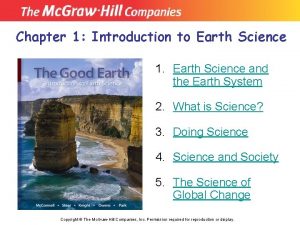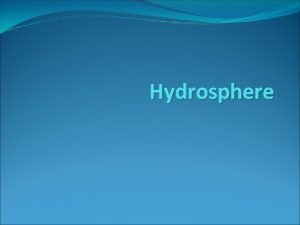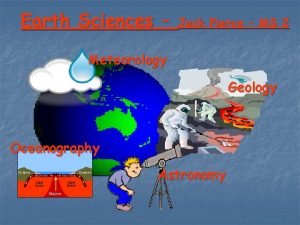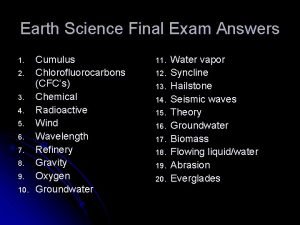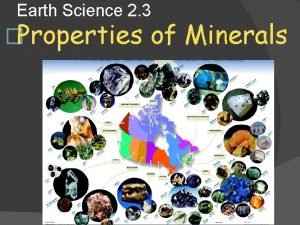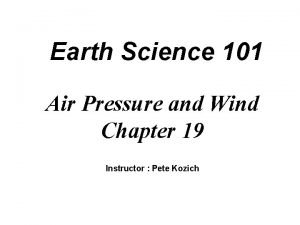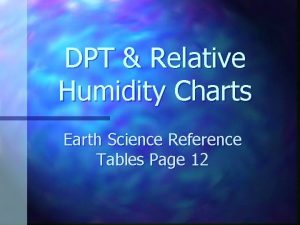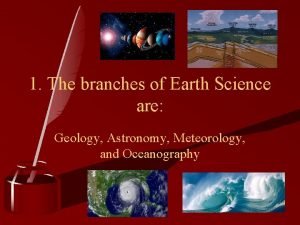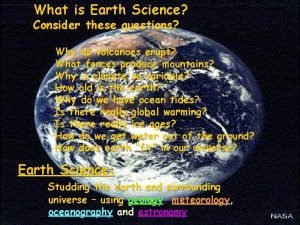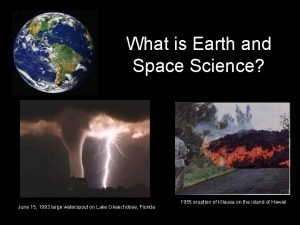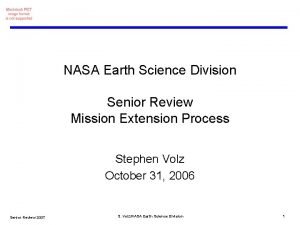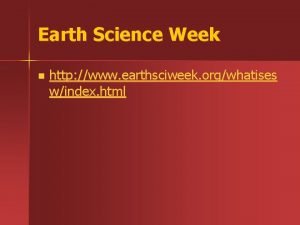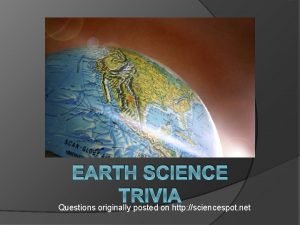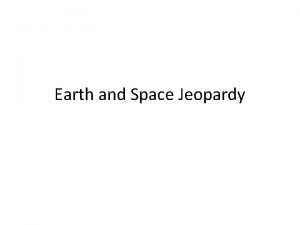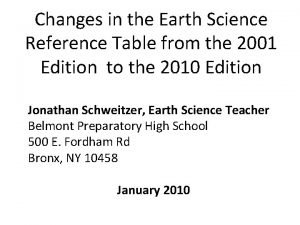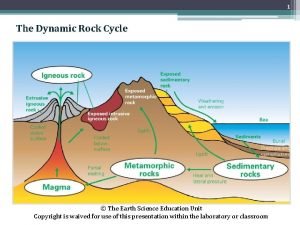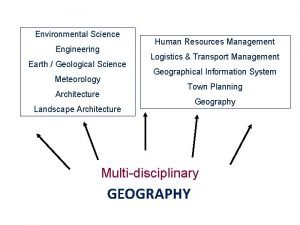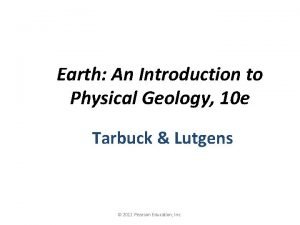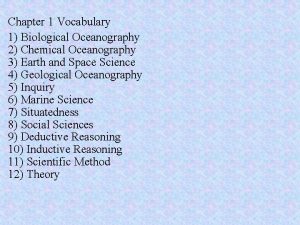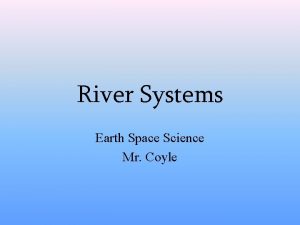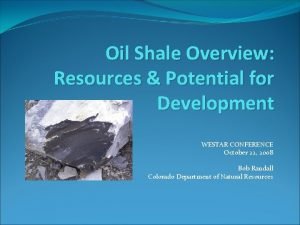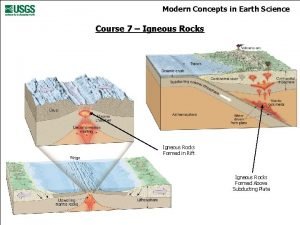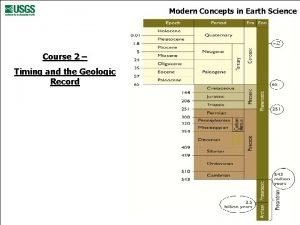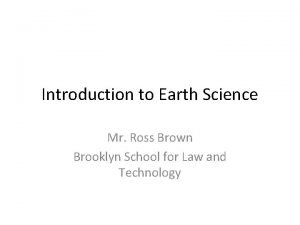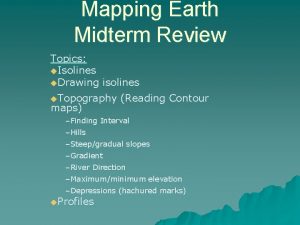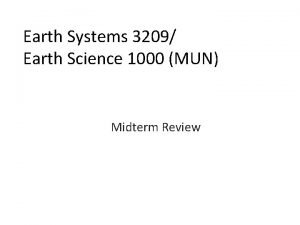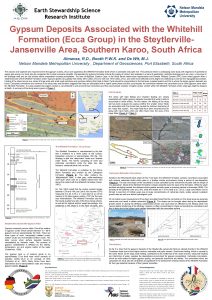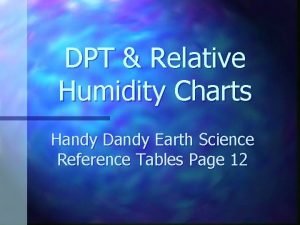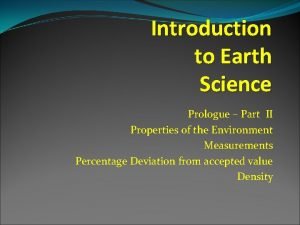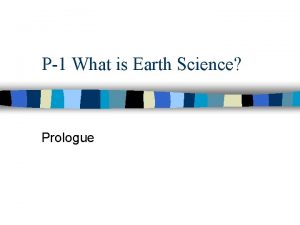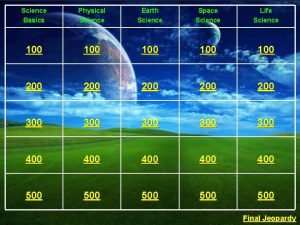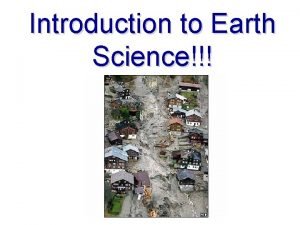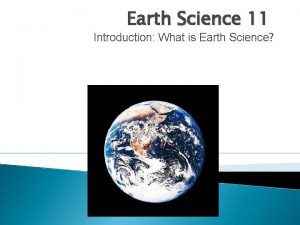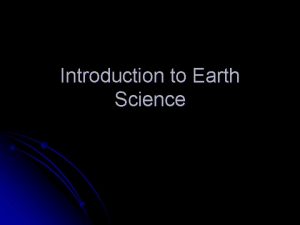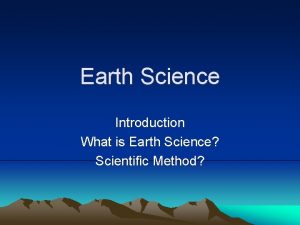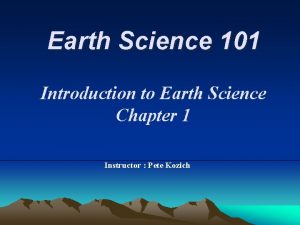Introduction to Earth Science Prologue INTRODUCTION TO EARTH


































































- Slides: 66

Introduction to Earth Science Prologue

INTRODUCTION TO EARTH SCIENCE Earth science-study of Earth’s systems Includes:



Includes: -meteorology


Includes: -meteorology -astronomy




Includes: -meteorology -astronomy -geology


Includes: 1) meteorology 2) astronomy 3) geology 4) oceanography

OBSERVATION-Use senses for information -We use INSTRUMENTS to extend the senses




OBSERVATION-Use senses for information -We use INSTRUMENTS to extend the senses INFERENCE-make a conclusion (guess) -making sense of observations





CLASSIFICATION-arranging into groups -helps organize information

Scientific notation- “shorthand” for numbers Example: - 3. 0 x 103 = - 3. 0 x (10 x 10) = 3000

Do now: 3. 5 x 103 = _______ 8. 6 x 105 =________ 7. 4 x 102 =________

80, 000 = 8 x 104 9500= 520, 000 = 42, 000, 000=


PERCENT ERROR-how wrong you are

? Accepted value = correct answer Measured value = your guess Temperature? Accepted value - measured value PCT ERROR = ----------------------- x 100% accepted value

? Temperature? Accepted value - measured value PCT ERROR = ----------------------- x 100% accepted value

There are 495 jellybeans. Accepted value - measured value PCT ERROR = ----------------------- x 100% accepted value

Practice: A student measures a table to be 1. 9 m long. In reality it is 2. 0 m long. What is the percent error of the student? 2. 0 – 1. 9 X 100 = 5% 2. 0

A student measures a room to be 6. 9 m. If the actual length is 7. 5 m, the student’s percent error is? 7. 5 – 6. 9 X 100 = 8% 7. 5

A student determines the volume of a cube to be 8. 6 cm 3. The correct volume is really 8. 0 cm 3. What is the student’s percent error? 8. 6 – 8. 0 X 100 = 7. 5% 8. 0

Graphs A visual way to present data Types of graphs: -line graphs

Types of graphs: -line graphs Uses coordinates (x and y axis)

Types of graphs: -line graphs direct relationship indirect or inverse relationship cyclic relationship

Rules for making graphs: 1) The graph should be as simple and easy to read as possible.

Rules for making graphs: 2) On each axis, equal intervals must represent equal changes

Rules for making graphs: 3) Time is always plotted on the “x” (horizontal) axis

Rules for making graphs: 4) When possible, make best fit line(s)

Rules for making graphs: 5) Fit the graph to the paper. Make it large enough to fit most of the paper.

Rules for making graphs: 6) Label each axis with quantity and units

Rules for making graphs: 7) The graph should make sense.

Can you find the error in this graph? Should be a line graph

Line should not start at zero Neither axis is labeled with units

Labels on axis switched

Graph does not fit line Vertical axis does not increase evenly

DENSITY

Density-how “heavy” an object is compared to an object of the same size mass Density = ---------volume units for mass = g units for volume = cm 3 or ml units for density = g/cm 3 or g/ml

example: volume of cube = 40 cm 3 mass of cube = 70 g density = ?


But…What if you cut the cube in half? Do now: volume = 40 cm 3 20 cm 3 mass = 70 g 35 g density = ________ **the density of an object doesn’t change**

Example #2: volume of rectangle = _____ mass of rectangle = 100 g density = ? 4 cm 3 cm Volume = length x width x height 2 cm

Which is more dense?

Which is more dense?

Which is more dense?

Which is more dense?

Which is more dense?

Average densities: -water = 1 g/cm 3 at 4 o C *** below 4 o. C the density of water decreases. Above 4 o. C, the density of water increases -Ice 0. 5 g/cm 3 -Earth = 5. 5 g/cm 3 -Saturn = 0. 7 g/cm 3 -human = ?

rate of change-How fast something changes change in value rate of change = -----------change in time

example: From 3: 00 pm to 6: 00 pm the air temperature falls from 85 o. F to 79 o. F. What is the rate of change for temperature during this time? Rate of change =

Do now: In 60 years, the shoreline at Rye Beach has shrunk by 30 inches. What is the rate of change for the shoreline?



Some changes are cyclic. Examples:
 Earth science prologue review
Earth science prologue review What's your favourite lesson
What's your favourite lesson Chapter 1 introduction to earth science
Chapter 1 introduction to earth science Earth science introduction
Earth science introduction Science fusion introduction to science and technology
Science fusion introduction to science and technology Meteorological symbols for four types of fronts
Meteorological symbols for four types of fronts Earth science sol 2010
Earth science sol 2010 Earth science practical review
Earth science practical review Earth science regents lab practical
Earth science regents lab practical Earth science lab practical
Earth science lab practical Earth science grade 9
Earth science grade 9 Dynamic equilibrium earth science
Dynamic equilibrium earth science Hydrosphere includes all the on earth
Hydrosphere includes all the on earth Science jeopardy 8th grade
Science jeopardy 8th grade Geology earth science definition
Geology earth science definition Earth science final exam
Earth science final exam Earth science meaning
Earth science meaning Geology earth science definition
Geology earth science definition Earth science sol review
Earth science sol review Earth science vs geology
Earth science vs geology Earth science final exam review
Earth science final exam review Earth science lab practical
Earth science lab practical Earth science final exam answers
Earth science final exam answers Hardness property
Hardness property Air pressure definition earth science
Air pressure definition earth science Earth science reference table dew point
Earth science reference table dew point What are the three major branches of earth science
What are the three major branches of earth science 282 ways to pass the earth science regents
282 ways to pass the earth science regents Earth science vs geology
Earth science vs geology Honors earth science
Honors earth science Why study earth science
Why study earth science Earthology definition
Earthology definition Wd pattison ap human geography
Wd pattison ap human geography Plate earth science
Plate earth science The sun warms the earth unevenly science or pseudoscience
The sun warms the earth unevenly science or pseudoscience Earth science review book
Earth science review book Nasa divisions
Nasa divisions Earth science week
Earth science week Earth science trivia questions
Earth science trivia questions Space shuttle discovery
Space shuttle discovery Earth system graphic organizer
Earth system graphic organizer Erosion definition
Erosion definition Earth science reference table page 16
Earth science reference table page 16 Rock cycle
Rock cycle Earth science
Earth science Whats an isoline map
Whats an isoline map Earth science
Earth science Metamorfica
Metamorfica Earth science chapter 1 vocabulary
Earth science chapter 1 vocabulary Deposition earth science
Deposition earth science Earth science jeopardy
Earth science jeopardy Cut bank earth science
Cut bank earth science Earth science
Earth science Earth science
Earth science Earth science
Earth science Earth science
Earth science Earth science
Earth science Equilibrium earth science
Equilibrium earth science Isolines earth science
Isolines earth science Mun earth science
Mun earth science Earth science gypsum
Earth science gypsum Handy dandy earth science reference tables
Handy dandy earth science reference tables Natural vs social science
Natural vs social science What are the branches of natural science
What are the branches of natural science Natural and physical science
Natural and physical science Applied science vs pure science
Applied science vs pure science Rapid change
Rapid change


